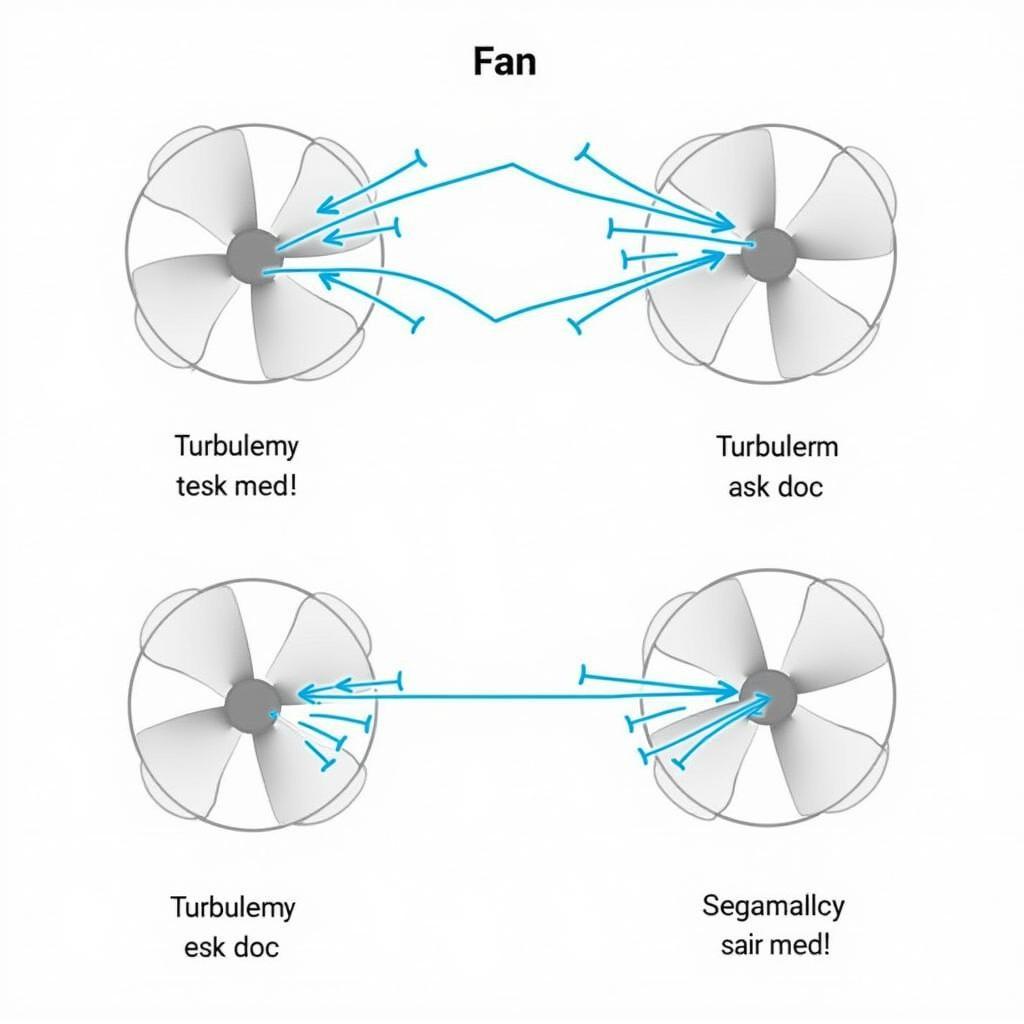Combining two case fans can significantly improve your PC’s cooling performance, preventing overheating and ensuring optimal system stability. Whether you’re a seasoned builder or a novice, understanding the nuances of fan placement and configuration is crucial for maximizing airflow and minimizing noise. This guide dives deep into the world of dual-fan setups, exploring various strategies and providing practical tips for achieving optimal cooling results.
Understanding the Importance of Airflow
Before delving into specific fan combinations, it’s essential to grasp the fundamental principles of airflow within a PC case. Heat generated by components like the CPU and GPU needs to be efficiently dissipated to maintain optimal operating temperatures. Strategic fan placement creates pressure differentials, driving cool air into the case and expelling hot air outwards.
Optimizing Fan Placement for Dual-Fan Setups
Dual-fan setups offer several advantages, including increased airflow and reduced noise levels compared to single-fan configurations. The key to maximizing their effectiveness lies in understanding the different airflow patterns they can create.
Intake and Exhaust: The Classic Combination
The most common dual-fan setup involves using one fan as an intake and the other as an exhaust. The intake fan, typically placed at the front of the case, draws cool air in. The exhaust fan, usually positioned at the rear or top, expels the heated air. This creates a continuous airflow cycle, effectively cooling the internal components.
Positive and Negative Pressure: Balancing the Airflow
Achieving a balanced airflow within the PC case is crucial for preventing dust buildup and maximizing cooling efficiency. Positive pressure, created by having more intake fans than exhaust fans, slightly pressurizes the case, forcing air out through any openings. Negative pressure, achieved with more exhaust fans, draws air in through any available gaps.
Dual Intake or Dual Exhaust: Specialized Applications
While less common, dual intake or dual exhaust configurations can be beneficial in specific scenarios. Dual intake can be useful in cases with restricted exhaust options, while dual exhaust can be effective in systems with high heat-generating components.
Fan Speed Control: Fine-Tuning for Optimal Performance
Controlling fan speed allows you to balance cooling performance with noise levels. Many modern motherboards offer fan speed control options through the BIOS or dedicated software. Adjusting fan curves based on system temperature can significantly reduce noise during idle periods while ensuring adequate cooling under load.
Choosing the Right Fans: Size, Speed, and Noise
Selecting the right fans is crucial for an effective dual-fan setup. Consider factors like fan size (e.g., 120mm, 140mm), speed (RPM), and noise levels (dBA). Larger fans generally move more air at lower speeds, resulting in quieter operation.
Expert Insights: John Smith, Senior PC Technician at Tech Solutions Inc.
“Choosing the right fans is like picking the right tires for your car. You need to consider the terrain and your driving style. For a quiet PC, larger, slower fans are ideal. For high-performance systems, faster fans are necessary, but they might be a bit louder.”
Troubleshooting Common Dual-Fan Issues
Occasionally, dual-fan setups can encounter issues such as conflicting airflow patterns or excessive noise. Understanding these common problems and their solutions can save you time and frustration.
 Troubleshooting Fan Conflicts
Troubleshooting Fan Conflicts
Expert Insights: Maria Garcia, Cooling Systems Engineer at CoolTech Solutions
“One common mistake is placing two fans directly opposite each other without considering the overall airflow within the case. This can create turbulence and reduce cooling efficiency. Careful planning and experimentation are key to optimizing a dual-fan setup.”
Conclusion
Combining two case fans is a cost-effective way to enhance your PC’s cooling performance. By understanding the principles of airflow, optimizing fan placement, and choosing the right fans, you can create a cool and quiet computing environment. Implementing these strategies will ensure your system runs smoothly, even under demanding workloads, extending the lifespan of your components. Remember to experiment with different configurations to find the optimal balance between cooling and noise for your specific setup.
FAQ
- How many fans do I need for my PC? It depends on your system’s components and heat output. Two fans are a good starting point for most systems.
- Should both fans be the same size? Ideally, yes, but using different sizes is possible as long as you consider the airflow implications.
- Can I mix and match fan brands? Yes, you can, but ensure they have similar specifications for optimal performance.
- How do I control fan speed? Through the BIOS or dedicated fan control software.
- What is the best fan orientation for intake and exhaust? Intake fans should typically face inwards, and exhaust fans should face outwards.
- How often should I clean my fans? Every few months, depending on your environment and usage.
- Can I use more than two fans? Yes, many cases support multiple fans for even better cooling.
For any further assistance, please contact us at Phone Number: 0903426737, Email: fansbongda@gmail.com Or visit our address: Lot 9, Area 6, Gieng Day Ward, Ha Long City, Gieng Day, Ha Long, Quang Ninh, Vietnam. We have a 24/7 customer support team.


